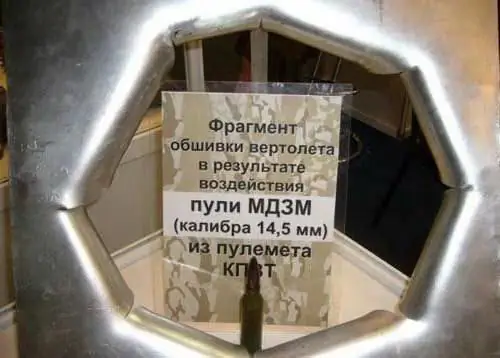2025 Author: Howard Calhoun | [email protected]. Last modified: 2025-01-24 13:10:39
Since the "great retreat" of 1915 of the Russian army in the First World War, large-caliber guns have been the focus of attention of the Russian and Soviet leadership.
Reasons for appearance

Even the rapid development of aviation and rocket technology did not take large-caliber artillery systems out of the priority category. Only during the short period of Khrushchev's rule was an attempt made to rely on missiles to the detriment of cannon artillery. The re-equipment of the Soviet Army was associated with the need to replace weapons systems developed during World War II. Not all of them corresponded to the concept of application in the modern army. The saturation of the troops with highly maneuverable armored vehicles, aviation, and missile weapons contrasted with the inactive towed artillery systems that formed the basislarge caliber artillery. The enemy troops also developed on the basis of the concept of rapid massive impact. The time of active combat activity of the battery increasingly depended on the ability to quickly take up positions for striking and the ability to evade a response. In the late sixties of the twentieth century, the development of the self-propelled artillery system "Hyacinth" began. New generation weapons fully meet modern challenges.
General appearance of 2C5 "Hyacinth"

The main task of the system is fire support for ground forces during combat operations. Destruction of long-term and equipped fortified points, defeat of accumulations of enemy manpower and equipment. The "Hyacinth" system, whose gun allows firing at a distance of almost forty kilometers with 152-mm projectiles of various equipment, from high-explosive to nuclear, allows solving tasks that are not feasible by other means. Counter-battery combat against enemy artillery is one of the most important functions. Installation 2C5 "Hyacinth" corresponds to it as much as possible. High mobility and rate of fire, short deployment time in position provide surprise and reduce vulnerability from a retaliatory strike. The armor protects the crew from fragments, which allows the self-propelled gun to operate even at the forefront.
Platform

The combat platform was developed by the Ural Transport Engineering Plant in the early seventies. On thethe armored self-propelled chassis of the "Hyacinth" installation, the gun is installed in an open way, without a conning tower. A 520 horsepower diesel engine is installed in front of the car. The calculation of the gun during movement is located in the body of the vehicle, protected by armor from one to three centimeters. The places of the operator and gunner during movement are located on the sides of the vehicle, on both sides of the ammunition load. Behind the driver's hatch in the frontal part of the vehicle, a commander's cupola is installed, equipped with surveillance and communication systems. A 7.62 mm machine gun is also installed there as a self-defense weapon.
Implement placement
When moving, the implement is in the transport position, placed horizontally along the machine body. When firing, it is transferred to a combat position with an angle of inclination up to 60 degrees vertically. The recoil of the gun is perceived not only by the body of the machine, but also by the aft base plate resting on the ground. During a position change, the base plate is lifted by a hydraulic system towards the rear of the hull. The combat power of the gun with separate loading shots is carried out using a semi-automatic system. In addition to sending a cartridge case and a projectile from a portable ammunition rack in the vehicle body, it is possible to supply charges from the ground. To do this, the "Hyacinth" installation is equipped with an ammunition loader and a conveyor.
Weapon Capabilities

The 152mm cannon is capable of firing at a range of up to forty kilometers, depending on the type of projectile. Gun shot includescartridge case and projectile fed into the breech separately. The rate of fire of the gun when loaded from an internal mechanized ammo rack is five to six rounds per minute. The internal portable ammo rack contains thirty rounds of separate loading, ensuring the self-propelled gun's rate of fire and autonomy. Compared to towed guns of the same purpose, the deployment time is five times less for the Hyacinth system. The weapon has increased efficiency in counter-battery combat, outperforming previous models, according to experts, by twenty-five percent.
Used ammunition
The main type of ammunition for the gun is high-explosive fragmentation shells. In conventional equipment, they can fire up to thirty kilometers. The use of active-reactive versions of the OFS increases this parameter to thirty-five to thirty-seven kilometers. The destruction of point targets is carried out using guided projectiles with laser illumination "Krasnopol" and "Centimeter". Despite the shorter flight range, limited to twelve to twenty kilometers, they turn the 2S5 "Hyacinth" into a precision weapon. The caliber of the gun made it possible to introduce several samples of shells with a nuclear warhead with a capacity of two tenths to two kilotons of TNT into the ammunition load. The range of ammunition demonstrates the widest range of capabilities of the system - from sniper firing of guided projectiles to the use of tactical nuclear weapons.
Arrangement

Aftera series of tests that continued from 1970, the machine was put into service in 1975 and entered mass production. The Soviet Army received a modern multifunctional vehicle weighing about 30 tons with a large power reserve on the highway and a range of fire. In addition to the Soviet Army, 152 mm self-propelled guns 2S5 "Hyacinth" were supplied to the armed forces of Finland, Ethiopia and Eritrea.
Modern modifications
Significant modernization potential of the 2S5 "Hyacinth" system was realized after the machine entered the troops. Work was underway to develop aiming and guidance systems, improve communications and navigation. A new long-range projectile with a gas-dynamic booster was developed for the gun. A 155 mm gun and a howitzer system were installed on the platform.
Combat use

For the outstanding characteristics of combat power in the Soviet and Russian armies, the system was given the comic name "genocide". Baptism of fire in Afghanistan 2S5 "Hyacinth" passed with honor. His calculations provided cover for transport and combat convoys, suppressed the firing points of dushmans. The undercarriage, which is the successor to the chassis of the legendary front-line SU-100, has proven itself well. In difficult mountainous conditions, it demonstrated high reliability and survivability, showing superiority over modern developments. After all, the T-64 tank with a chassis designed specifically for it had to be withdrawn from Afghanistan due to reliability problems. The end of the Afghan warwas the end of the combat biography. A self-propelled 152 mm gun was used during the suppression of the resistance of Chechen terrorists. Also, during the war in Ukraine, the 2S5 "Hyacinth" system was used. Photo and video materials testify to the use of large-caliber guns for shelling the cities of Donetsk and Lugansk regions.
Recommended:
How self-tapping screws are made at the factory: technologies and equipment. Machine for the production of self-tapping screws

How are self-tapping screws made at the factory? The answer to this question is a fairly simple technique. At the enterprises, blanks with hats are first made from steel wire. Further, threads are cut on such blanks
Self-supporting is Principles of self-supporting

Cost accounting is one of the tools that is used in solving social and economic problems. It involves the use of cost categories and indicators that are adequate to them
Diesel gun: reviews and selection criteria. Diesel gun of indirect heating: technical characteristics

The diesel heat gun is ideal for quickly heating a construction site, agricultural, warehouse or industrial premises. Since its operation is carried out on diesel fuel, it consumes electricity exclusively for the operation of automation and a fan. As the main advantages of such a technological solution, one can name a relatively high thermal power with rather small dimensions
RPK-16 machine gun: specifications. Kalashnikov light machine gun

At the international presentation of weapons "Army-2016", held in September 2016, the RPK-16 machine gun, the brainchild of domestic gunsmiths, was demonstrated. It will be discussed in this article
KPVT, machine gun. Heavy machine gun Vladimirov KPV

The idea of defeating aircraft and lightly armored vehicles led to the creation of heavy machine guns with a caliber of more than 12 mm. Such machine guns were already able to hit a lightly armored target, get a low-flying aircraft or helicopter, as well as shelters behind which there was infantry. According to the classification of small arms, the 14.5-mm KPVT machine gun is already adjacent to artillery weapons. And in design, heavy machine guns have much in common with automatic guns

